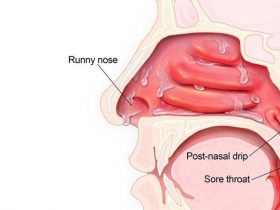Nosebleed is a health condition, also known for its medical term “Epistaxis.” A nosebleed is a condition that describes the loss of blood from the tissue that lines the inside of your nose. It can occur on one or both nostrils, but most commonly affects one nostril.
There are many tiny blood vessels in your nose. These vessels help warm and moisten the air you breathe. But they lie close to the inner surface of your nose. As air passes through the nose, it can dry and irritate your blood vessels. This makes it easy for the blood vessels to injure or break, resulting in a nosebleed.
Although it can be uncomfortable, most nosebleeds aren’t serious. Epistaxis is quite common. About 60% of people will have at least one nosebleed in their lifetime. Only about 10% of cases are severe enough to require medical treatment.
Who Is More Likely to Get a Nosebleed

Nosebleeds can happen to anyone. Most people will experience it at least once in their lifetime. However, some people are more likely to have a nosebleed. They include:
- Children between the ages of two and 10: Dry air, allergies, colds, and sticking fingers and objects into their noses make children more likely to have nosebleeds.
- Adults between the ages of 45 and 80: Blood may take longer to clot in mid-life and in older adults. These adults are also more likely to have high blood pressure, atherosclerosis (hardening of the walls of arteries) or a bleeding disorder.
- Pregnant people: Due to pregnancy, the blood vessels in your nose expand which exerts more pressure on the delicate blood vessels in your nose expand while your blood vessels in the lining of your nose.
- People taking blood-thinning medications: Examples of such drugs are aspirin and warfarin.
- People who have blood clotting disorders: Examples of such conditions are hemophilia and von Willebrand disease.













